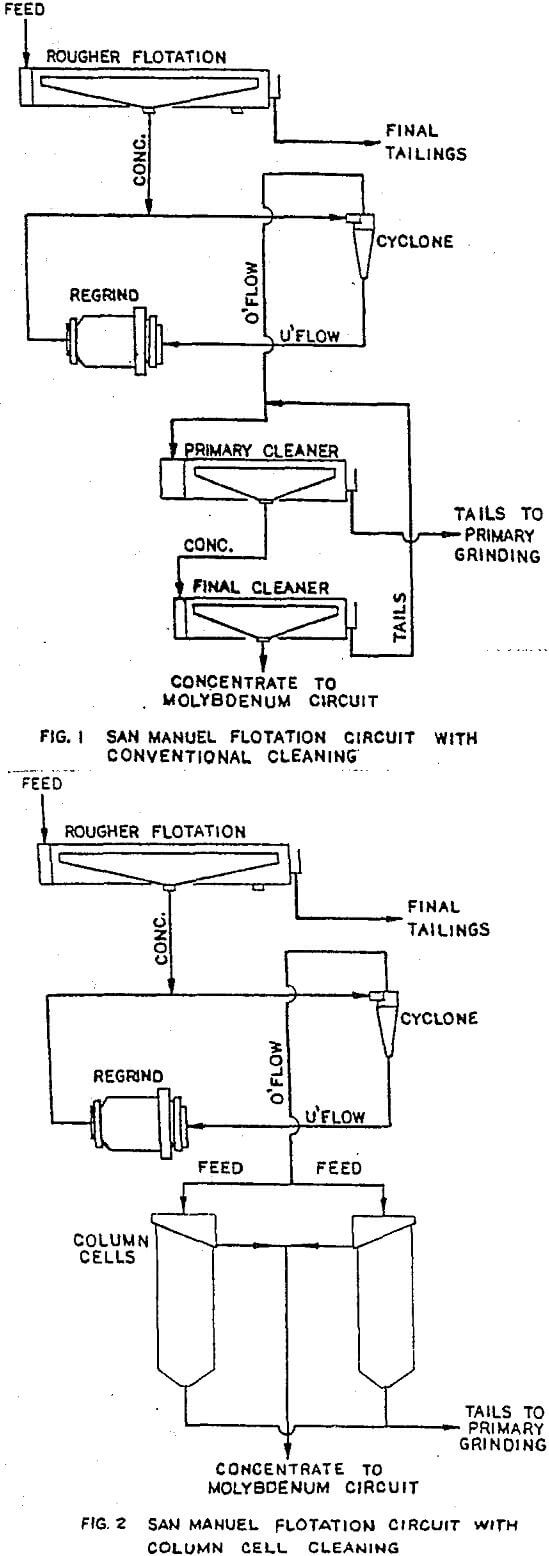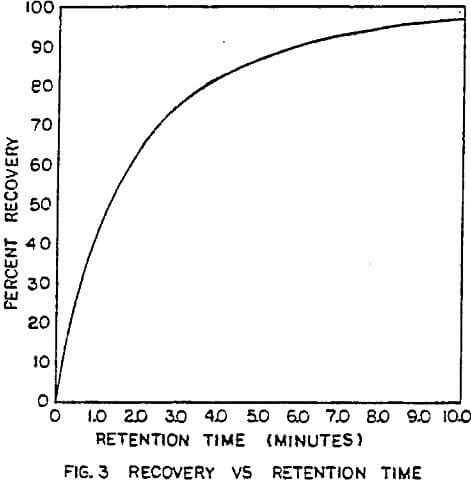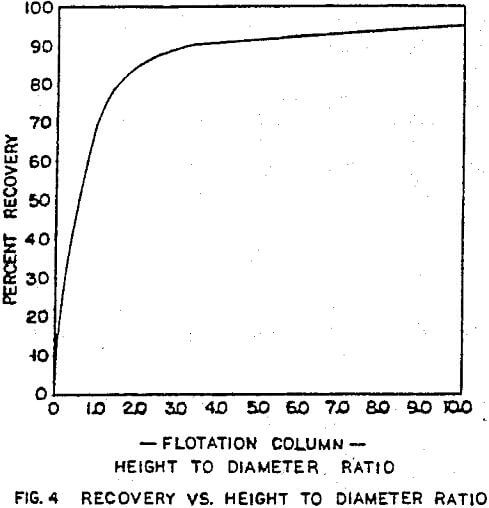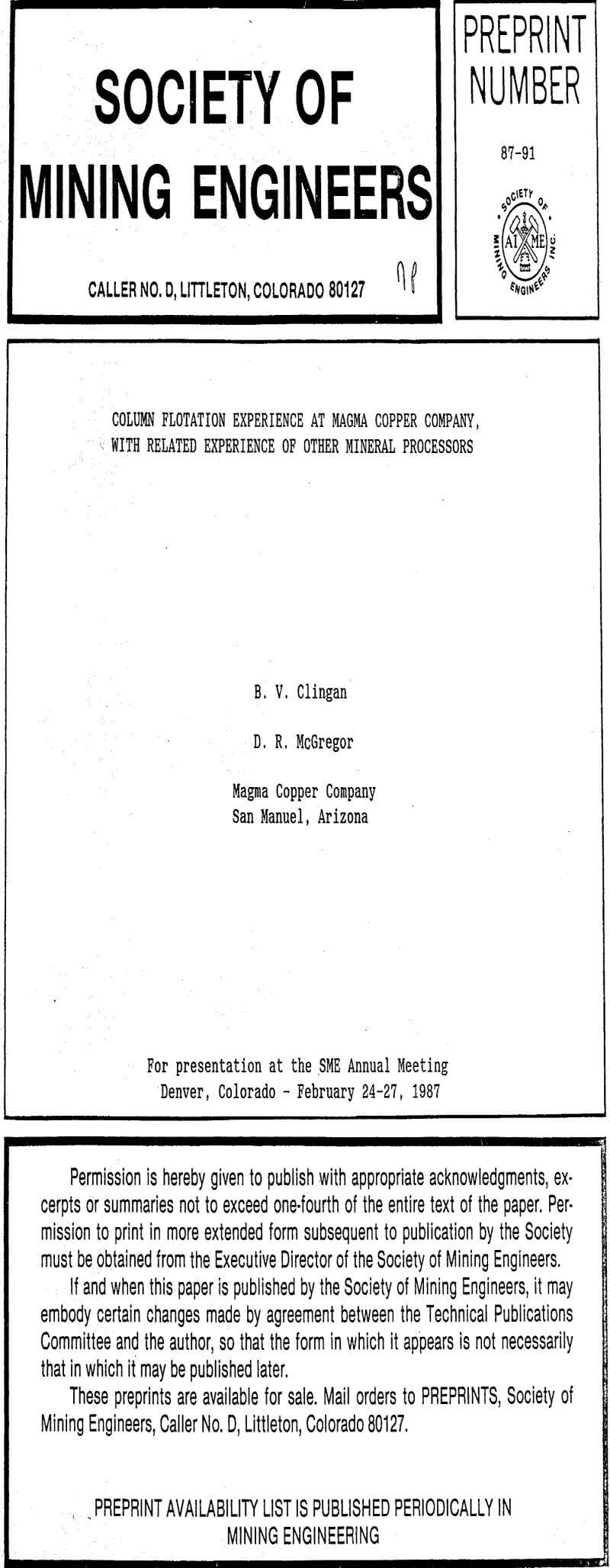A practical application of recent design concepts makes it possible to design a column cell to fit a specific set of conditions. The design and operating parameters of a column cell installation that replaced a conventional two stage copper flotation cleaning circuit at MAGMA COPPER COMPANY, SAN MANUEL, ARIZONA using these design concepts is described. A survey of other mineral processors using column cell technology was conducted.
The Magma San Manuel Concentrator
A 56,700 MTPD grinding circuit consists of rod milling, followed by closed circuit ball milling with hydrocyclone classifiers. Primary grinding cyclone overflow averages 8.0 percent plus 0.208mm (65 mesh). Rougher flotation produces a concentrate and the final tailings. The rougher concentrate is reground to 76.0 to 78.0 percent passing 0.043mm (325 mesh). The regrind mill is operated in closed circuit with cyclone classifiers. The regrind cyclone overflow feeds a two stage cleaning circuit.

Column Cell Design
Residence time would be the most significant factor influencing mineral recovery. The residence time would impact mineral recovery, based on the DOBBY AND FINCH model, keeping other variables constant.

The height to diameter ratio is a measure of mixing, where plug flow would be a perfect system.

Instrumentation
A conventional flotation machine always operates with a negative bias. Also described by Amelunxen is a three loop-control strategy involving automated control of the bias, pulp level, and air flowrate. The bias control loop adjusts the valve on the tailings line to maintain a constant bias between he tailings flowrate and feed flowrate. The pulp level control loop adjusts the wash water flowrate to maintain a constant pulp level. The air to the cell is controlled by correlating the wash water flowrate to the bias.
The following instrumentation was installed on each of the new cells:
- Feed Flow Meter
- Tailings Flow Meter
- Wash Water Flow Meter
- Air Flow Meter
- Pulp Level Sensor
- Static Head Level Sensor
- Programmable Controllers (3)
- Automatic Valves (3)
Column Cell Operation
The pulp level was varied over a range of 0.6m (2 ft) to 1.1m (3.5 ft). Each setting was maintained for a period of time keeping other variables constant. The pulp level was controlled by the tailings valve. The results over the range investigated indicated that pulp level had little or no effect on concentrate grade or for recovery of copper or molybdenum. The flotation columns could not be operated at a shallower froth depth due to a design restriction.
The wash water flowrate was evaluated in an identical manner as was pulp level. The range of wash water flowrates evaluated was from 0.0 L/min to 605 L/min (160 GPM) for each cell, or from a bias of 0.85 to 1.25. The results indicated, as was expected, that the concentrate grade decreased below a bias of 1.00. No change in copper or molybdenum recovery was noted from a bias of 0.85 to 1.15, but above 1.15 molybdenum recovery did decrease. No difference in metallurgical results was detected between a bias of 1.00 to 1.15, or about 225 L/min (60 GPM) to 450 L/min (120 GPM).
Evaluation of the air flowrate was tested in a similar manner to pulp level, and wash water. Because the two column cells were of different size, relating the air flowrate to the cell volume (liters per minute to liters) provides a valid way of correlating column cell performance.
Because the air flowrate is the most important operating parameter the air sparger is the most important column cell fixture. The importance of generating a small bubble cannot be overstated. As an example, the copper flotation columns were operated with holes in the sparger fabric for a period of time.
The overall results attained with the single stage copper flotation columns are equal to the two stage conventional cleaner circuit in copper recovery. A concentrate grade of 29.83% Cu with a sulfide copper recovery of 90.36 percent for the column flotation cleaner circuit as compared to a 29.99% Cu concentrate grade and a sulfide copper recovery of 90.12 percent for conventional flotation cleaner circuits.

